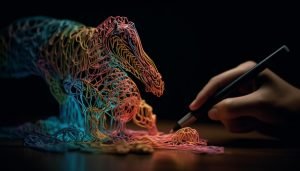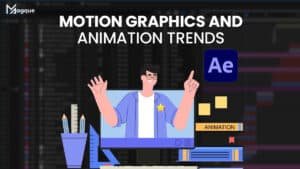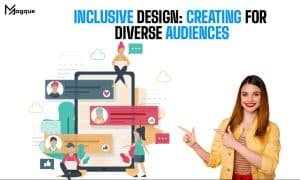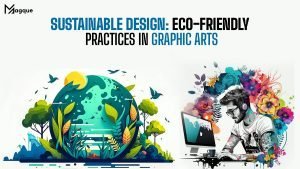Graphic design is a versatile field beyond aesthetics, serving as a potent tool for effective communication, information conveyance, persuasion, and engagement. Moreover, it involves creating visual compositions that inform, promote, and drive sales while fostering connections through graphic work. The field comprises various specializations, allowing designers to focus on specific types and explore others.
Furthermore, with technology advancements, designers can access various tools to enhance their craft. Also, each specialization demands specific skills and techniques. Adaptability and lifelong learning are essential due to the industry’s dynamic nature. That enables designers to align with their interests, assess market demand, build diverse skills, and attain job satisfaction while catering to clients’ diverse needs.
Why Choose Graphic Design?
Graphic Design to Consider for Your Creative Career is more than aesthetics; it’s a fundamental communication element. Moreover, it empowers professionals to convey information, ideas, and perspectives with impact, which makes it invaluable in today’s visually-driven world. Let’s explore more:
- Diverse Specializations: Firstly, graphic design offers various specializations. That allows individuals to tailor their careers to their interests and market demands.
- Technological Advancements: Evolving technology and advanced design software provide designers with powerful tools to enhance their craft and stay current with industry trends.
- Skill Development: Further, Graphic design demands specific skills. That enables designers to specialize and excel in their chosen area.
- Adaptability and Growth: The dynamic nature of the field requires adaptability and lifelong learning to stay relevant in a changing landscape.
Client Satisfaction: Understanding different design specialities enables designers to meet diverse client needs while achieving job satisfaction.
Best 7 Skill Boosting & Creativity Driven Graphic Design

Graphic design is a versatile field with overlapping specialities, offering designers adaptable skills for diverse roles and industries. Whether you’re an aspiring designer or require design services for your business, knowing these seven types of graphic design helps you find the right skills. Explore these areas to align with your career goals and interests:
- Visual Identity Graphic Design
Firstly, we have Visual identity design, a specialized field in graphic design. It is crucial for crafting a company’s brand image by creating logos, typography, colours, and guidelines. Branding designers maintain a cohesive visual identity, aligning it with marketing messages and audiences. Moreover, they make materials like logos, websites, and business cards, requiring software skills, research, and communication abilities. Brand identity represents the organization’s relationship with its audience, conveying personality and emotions. Visual identity designers collaborate to create visual assets and guidelines to ensure brand consistency, relying on creativity and research to shape consumer perceptions and brand connections.
- Marketing & Advertising Graphic Design
Marketing and advertising design in graphic design demands creativity and marketing expertise. Moreover, it entails crafting visually engaging materials while upholding brand identity, including posters, banners, social media ads, and brochures. Marketing design extends brand identity to serve marketing objectives across print and digital platforms. Collaboration and communication skills are vital as marketing designers work in teams to create assets that align with marketing strategies, spanning diverse formats essential for successful campaigns.
- Publication or Print Graphic Design
Publication designers create visually appealing printed materials, including books, magazines, newspapers, and print items like brochures and posters. They focus on layouts, typography, and image placement for aesthetics and readability, requiring expertise in print production. Furthermore, collaboration with writers and editors is joint, necessitating skills in layout, print design, colour theory, and Adobe Creative Suite. Publication designers also manage elements like photography and graphics, contributing to print and digital publishing, making it a classic yet evolving field essential for content presentation.
- Web and App Graphic Design
Web design combines web engineering, architecture, graphic and UX design, and SEO to create and maintain websites. It emphasizes user-friendly interfaces, and web and app designers specialize in UI/UX while staying updated on tech trends. UI designers focus on visuals and collaborate with UX and UI developers, while graphic designers customize layouts for specific audiences, especially interface design. Also, UI designers require graphic design skills, UI/UX expertise, responsive design knowledge, and programming abilities to balance aesthetics and functionality across devices.
- Illustration & Digital Art Graphic Design
Illustration and Digital Art graphic design create visual communications to promote products or services through website ads, billboards, print ads, and TV commercials. Effective advertising design aims to capture attention and persuade action through a balance of eye-catching visuals and messaging. Moreover, Illustrators and digital artists contribute original artwork to enhance various projects. While distinct from graphic design, graphic art and illustration intersect, offering creative elements like T-shirt designs, motion graphics, and comic books, enriching the field with their artistic contributions.
- Motion Graphic Design
Motion designers specialize in creating animations, videos, and motion graphics for multimedia projects, using graphic design and animation techniques to convey messages effectively. They work on diverse projects like commercials, film credits, and interactive media, utilizing software for 2D and 3D animations. Staying updated with trends like kinetic typography is crucial. Motion designers collaborate on various projects, including video games and social media brand animations, often in teams. Furthermore, their work includes title sequences, animated logos, and promotional videos, vital to multimedia content creation.
- Environmental Graphic Design
Environmental designers enhance physical spaces, like museums and retail stores, using visuals like signage and displays to improve the overall experience. Moreover, in environmental graphic design, aesthetics, functionality, and identity are combined through graphics and signage. Designers collaborate across graphic design, architecture, and interior design disciplines to create memorable, informative, and navigable spaces. Wayfinding, a crucial aspect, includes signage for easy navigation. This field is increasingly using digital interactive displays for more engaging experiences.
Bottom Line:
The information emphasizes the dynamic nature of graphic design as a powerful tool for effective communication. It highlights diverse specializations, showcasing designers’ wide-ranging skills, from visual identity to motion graphics. The evolving industry landscape underscores adaptability and lifelong learning. Encouraging exploration of design types aligns careers with interests and market demands. It offers valuable insights for aspiring designers and clients, emphasizing the potential for fulfilling and versatile graphic design careers. Visit Here:- Best Web Design Tools (Graphic Design Tools) For 2023













